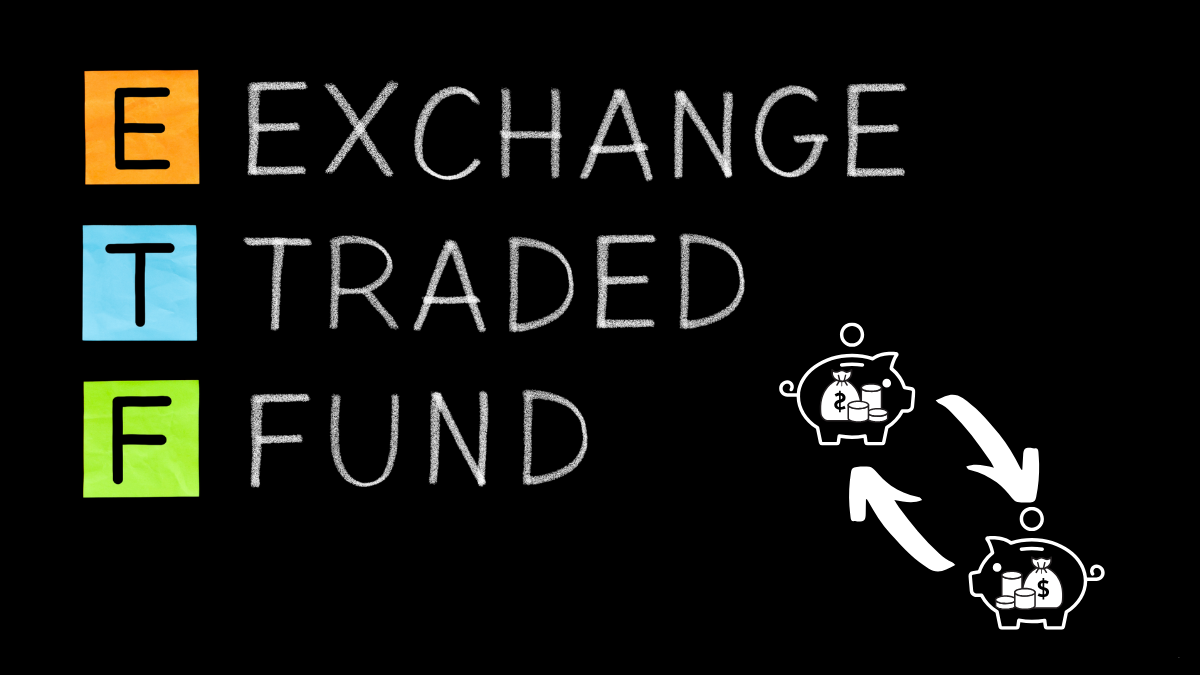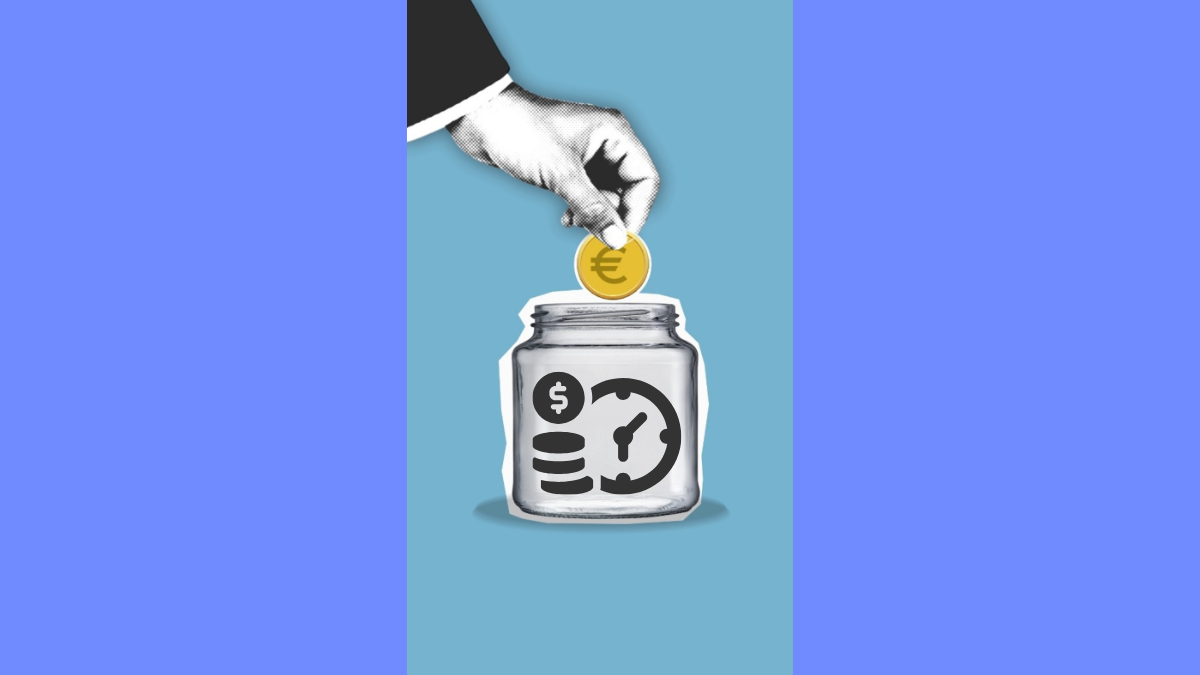What Is a Stock?
A stock is a type of investment that represents a share in the ownership of a company. When you buy a stock, you become a shareholder — meaning you own a slice of that business and have a financial stake in its performance.

Stocks are issued by companies as a way to raise money. When companies need capital to expand operations, launch new products, or hire more staff, they often sell shares of their business to investors on public stock exchanges like the NYSE or Nasdaq.
Stocks are also known as equities, and they come with both opportunities and risks. While a stock’s value can rise dramatically if a company grows, it can also fall just as quickly if the company underperforms or the market declines.
Capital gains: You earn a profit if you sell a stock for more than you paid. Dividends: Some companies return part of their profits to shareholders through periodic dividend payments. Voting rights: Owning common stock may give you the ability to vote on corporate policies and board elections. Market risk: Stock prices fluctuate daily due to changes in company performance, market conditions, news events, and investor sentiment.There are two main types of stock:
Common stock: Most investors buy this type. It offers potential for growth, dividends, and voting rights. Preferred stock: Often pays higher fixed dividends but comes with limited or no voting rights. It behaves more like a bond.Stocks can be bought individually or as part of a broader investment vehicle like an ETF or index fund. They are foundational to most portfolios — but require knowledge, patience, and risk tolerance.
For more on how to buy, check out our Step-by-Step Guide to Buying Your First Stock and Stocks vs. ETFs.
Or dive deeper with trusted sources like the SEC Stock Investing Guide and Morningstar Investor Education.
Why Are Stocks So Popular?
Stocks have been the go-to investment for decades — and for good reason. They offer one of the best opportunities for long-term growth and are the backbone of most wealth-building strategies.
Here’s why millions of people choose to invest in stocks:
- High potential returns: Historically, the stock market has returned about 7%–10% annually (after inflation), making it one of the top-performing asset classes.
- Accessibility: Anyone with a brokerage account can buy shares of a company in seconds. Many platforms now support fractional shares, so you can start with just a few dollars.
- Ownership and connection: When you invest in a company like Apple or Tesla, you’re not just buying a ticker — you’re buying into a brand or business you believe in.
- Liquidity: Stocks can be bought and sold quickly during market hours, which makes it easy to access your money if needed.
- Transparency: Public companies are required to report earnings, news, and financial data — giving investors access to research and analysis.
What Is an ETF?

An ETF (Exchange-Traded Fund) is a type of investment fund that lets you buy a large group of assets — usually stocks — in one single trade. Instead of investing in just one company, an ETF gives you exposure to many companies at once, helping you reduce risk and simplify your investing.
Here’s how it works: Imagine an ETF like a basket. Inside that basket, there might be hundreds (or thousands) of stocks. When you buy one share of the ETF, you’re buying a slice of that whole basket — not just one item.
ETFs trade on major stock exchanges like the NYSE and Nasdaq. You can buy or sell them during regular market hours, just like an individual stock.
- Diversification: One ETF can give you exposure to an entire index or sector — without buying each stock individually.
- Low cost: ETFs often have super-low fees (some as low as 0.03%) because they’re passively managed.
- Liquidity: You can buy or sell ETFs throughout the trading day.
- Accessibility: Most brokerages allow you to invest in ETFs commission-free.
Why Are ETFs So Popular?
ETFs have grown in popularity because they offer a powerful combo of simplicity, flexibility, and cost savings.
Here’s what makes them stand out:
- You get instant diversification, which lowers your exposure to single-stock risk.
- You don’t need much money — fractional shares and no minimums mean you can start with $5–10.
- You can find an ETF for almost anything — big companies, small companies, international markets, bonds, real estate, gold, clean energy, AI, and more.
How Are ETFs Different from Mutual Funds?
- ETFs trade like stocks — you can buy and sell anytime during market hours.
- Mutual funds trade only once a day, after the market closes.
- ETFs usually have lower fees and are more tax-efficient than mutual funds.
Examples of Common ETFs
Broad Market ETFs- VTI – Total U.S. Stock Market
- SPY – Tracks the S&P 500
- ITOT – Core Total Market
- SCHD – Schwab U.S. Dividend Equity
- VYM – Vanguard High Dividend Yield
- XLK – Technology
- ICLN – Clean Energy
- BOTZ – Robotics & AI
- VXUS – Total International Market
- VWO – Emerging Markets
Want to go deeper? Check out our Beginner’s Guide to ETFs or use the Morningstar ETF Screener to explore and compare funds.
What Is an Index Fund?

An index fund is a type of investment fund that lets you invest in an entire market — like the S&P 500 — by owning small pieces of every company in that index.
Instead of trying to beat the market by picking individual winners, an index fund’s goal is simple: match the performance of a market index as closely as possible. That means if the index goes up, your investment goes up with it (minus a small fee).
Index funds are passive investments. There’s no fund manager trying to outsmart the market. The fund automatically buys and holds the same companies that make up the index.
- Passive strategy: No one is trying to time the market or guess which stocks to pick.
- Low cost: Most index funds charge extremely low fees — often just 0.02% to 0.05%.
- High diversification: You’re investing in hundreds (or thousands) of companies in a single fund.
- Long-term consistency: Index funds tend to perform steadily over time and match the market’s average return.
Why Are Index Funds So Popular?
- They’re simple: You don’t need to study companies, watch the news daily, or react to every dip in the market.
- They work: Most active investors fail to beat the market over time — but index funds keep up with it.
- They’re efficient: Lower trading activity and built-in structure makes index funds more tax-efficient than actively managed mutual funds.
- They’re trusted: Big-name providers like Vanguard, Fidelity, and Schwab offer popular index funds with long track records.
How Are Index Funds Different from ETFs?
While many index funds are also available as ETFs, traditional index funds have some small differences:
- Index funds (as mutual funds) only trade once per day, after the market closes.
- ETFs trade throughout the day, just like individual stocks.
- Both can track the exact same index (like the S&P 500), but offer different trading flexibility.
Examples of Popular Index Funds
S&P 500 Index Funds- SWPPX – Schwab S&P 500 Index Fund
- FXAIX – Fidelity 500 Index Fund
- VFIAX – Vanguard 500 Index Fund
- VTSAX – Vanguard Total Stock Market
- SWTSX – Schwab Total Stock Market
- FSKAX – Fidelity Total Market Index Fund
- VBTLX – Vanguard Total Bond Market Index Fund
- VGTSX – Vanguard Total International Stock Index Fund
To learn more, visit our Beginner’s Guide to Index Funds or explore ETFs vs. Index Funds to see which style fits your needs best.
You can also explore funds at Vanguard or Charles Schwab.
Stocks vs. ETFs vs. Index Funds: What’s the Difference?
All three of these investments — stocks, ETFs, and index funds — involve putting your money into the market. But how they work, how much control you have, and how much risk you're taking are very different.
Let’s break it down clearly:
1. Stocks: High Risk, High Reward
When you buy a stock, you’re buying a piece of one specific company. You succeed if that company grows — and lose if it doesn't.
- You own one company (e.g., Apple, Amazon, Tesla).
- You’re in full control of what you buy, when you sell, and how long you hold.
- Risk is higher because your performance depends entirely on that single company.
- Potential reward is higher too — especially if you choose a company that outperforms the market.
2. ETFs: Flexible & Diversified
An ETF (Exchange-Traded Fund) gives you exposure to a whole basket of companies. It trades like a stock but behaves more like a mutual fund.
- You own a slice of many companies in one ETF.
- You can buy/sell anytime during market hours — just like a regular stock.
- Fees are low, and many ETFs are passively managed to track an index.
- Diversification is built in, reducing the impact of any one company performing badly.
3. Index Funds: Slow, Steady & Automated
Index funds are similar to ETFs in that they invest in a large group of companies — but they’re structured differently.
- They track a market index (like the S&P 500 or total U.S. market).
- They only trade once per day at the market’s closing price.
- They are often used in retirement accounts like 401(k)s and IRAs.
- Fees are ultra-low, and there's no need to actively manage anything.
Key Differences at a Glance
Ownership
- Stocks: One company only.
- ETFs: Many companies, often tracking an index.
- Index Funds: Many companies, always tracking an index.
Diversification
- Stocks: ❌ None — unless you buy dozens of companies.
- ETFs: ✅ Built-in diversification.
- Index Funds: ✅ Built-in diversification.
Control
- Stocks: High control (pick and choose).
- ETFs: Medium control (choose your basket).
- Index Funds: Low control (hands-off by design).
Trading Flexibility
- Stocks: Trade anytime the market’s open.
- ETFs: Trade anytime the market’s open.
- Index Funds: Trade once per day, after market close.
Cost & Fees
- Stocks: No fund fees (just commissions, if any).
- ETFs: Very low expense ratios.
- Index Funds: Ultra-low expense ratios (sometimes even lower than ETFs).
Best For
- Stocks: Experienced investors or those seeking high upside and control.
- ETFs: Most investors — especially beginners looking for balance and flexibility.
- Index Funds: Long-term, automated investing (great for retirement accounts).
So… Which One Should You Choose?
It depends on your goals:
- Want to actively pick companies you believe in? → Start with stocks.
- Want broad exposure without picking stocks? → Try ETFs.
- Want to invest passively for decades? → Use index funds.
To compare these more visually, keep reading for our full Pros & Cons breakdown.
Pros and Cons of Each Investment Type
Every investment type — whether it’s a stock, ETF, or index fund — offers unique strengths and weaknesses. Choosing the right one depends on your goals, risk tolerance, time horizon, and level of involvement.
Let’s explore each in more detail:
Stocks
- Pros:
- High Growth Potential: Individual stocks can deliver outsized returns, especially in fast-growing industries like tech or AI.
- Full Control: You decide exactly which companies to invest in and when to buy or sell.
- Dividends: Many companies pay regular dividends, creating a source of passive income.
- Tactical Advantage: Advanced investors can use timing, earnings reports, or insider trends to gain an edge.
- Cons:
- Volatility: Prices can swing dramatically due to news, earnings, or market sentiment.
- High Risk: Poor company performance can wipe out your investment.
- Research-Heavy: Requires ongoing analysis of financials, trends, and news.
- No Diversification: Unless you own dozens of stocks, you’re exposed to concentration risk.
ETFs (Exchange-Traded Funds)
- Pros:
- Instant Diversification: Own small portions of many companies in one purchase.
- Low Fees: Expense ratios are typically much lower than actively managed mutual funds.
- Flexible Trading: Buy or sell throughout the trading day like a regular stock.
- Targeted Exposure: You can choose ETFs focused on sectors (e.g. energy, tech), themes (e.g. sustainability, AI), or global regions.
- Cons:
- Overwhelming Variety: There are over 3,000 ETFs in the U.S. alone — making it hard to choose.
- Hidden Overlap: You may unknowingly invest in the same companies across different ETFs.
- Market Timing Temptation: Easy access may lead to frequent trading, which defeats the long-term purpose.
Index Funds
- Pros:
- Reliable Long-Term Growth: Historically, broad index funds (like S&P 500 trackers) have delivered strong, steady returns over decades.
- Ultra Low Fees: Some funds cost just 0.02% annually — nearly free.
- Set-It-and-Forget-It: Great for automating your investing through retirement accounts like IRAs or 401(k)s.
- Simple and Passive: No need to monitor markets daily — it follows the index.
- Cons:
- Trades Once Daily: Unlike ETFs, index funds don’t allow intra-day trading — which can limit flexibility.
- Minimum Investment Requirements: Some mutual fund versions require $1,000+ to start (though ETF equivalents don’t).
- Less Customizable: You can’t fine-tune your exposure the way you can with ETFs or stocks.
Quick Comparison by Feature
1. Ownership
- Stocks: You own one specific company (e.g., Apple, Tesla).
- ETFs: You own small slices of many companies in one fund.
- Index Funds: You own a fund that passively follows a market index.
2. Diversification
- Stocks: Low diversification — risk tied to one company.
- ETFs: High diversification — often hundreds of holdings.
- Index Funds: ✅ High diversification — mirrors the market.
3. Cost & Fees
- Stocks: No fund fees, but trading may involve commissions.
- ETFs: Very low expense ratios (e.g., 0.03%).
- Index Funds: Ultra-low expense ratios (e.g., 0.02%) but may require minimum investment.
4. Trading Flexibility
- Stocks: Trades instantly during market hours.
- ETFs: Trades like a stock throughout the day.
- Index Funds: Trades only once at end-of-day NAV.
5. Best For
- Stocks: Active investors looking for control and potential big gains.
- ETFs: All levels of investors who want flexibility and diversification.
- Index Funds: Long-term, automated investors — ideal for retirement accounts.
- Build their core portfolio with index funds (for stability)
- Add ETFs for flexibility or sector exposure
- Occasionally buy individual stocks for higher potential (with money they’re willing to risk)
Which One Should You Start With?
The right choice depends on your goals, confidence, and how hands-on you want to be.
- Start with ETFs or index funds: Ideal for beginners due to low fees and built-in diversification.
- Avoid chasing stocks early: It’s easy to get emotional or fall into hype cycles.
- Use fractional shares: Apps like Fidelity and Schwab let you invest with as little as $5.
Resources: Fractional Shares Guide | Choosing Your First Investment
How to Invest in Them (Step-by-Step)
You don’t need thousands of dollars or a finance degree to start investing. Here’s how to begin in just a few steps:
- Step 1: Open a brokerage account
- Step 2: Fund your account
- Step 3: Choose your investment
- Step 4: Set up auto-investing
Mistakes to Avoid When Buying Your First Investment
Investing is simple — but it’s easy to get caught in traps that can delay your progress.
Avoid these common mistakes:
- Chasing trends: Buying what’s hot today often leads to losses tomorrow.
- Overtrading: Frequent buying/selling leads to fees, taxes, and stress.
- Ignoring fees: Even a 1% fee can eat thousands of dollars over time.
- Under-diversifying: Owning one or two stocks means one bad move can wreck your portfolio.
See our Diversification Starter Guide and Cost Comparison Tool to optimize your portfolio smartly.

Trusted provider of low-cost ETFs and index funds ideal for hands-off, long-term investing.
Learn More

Full-service brokerage offering commission-free trades, index funds, and powerful investor tools.
Learn More




